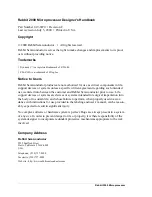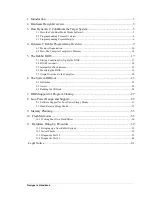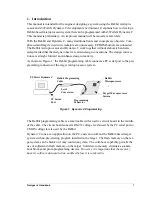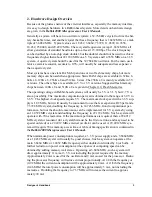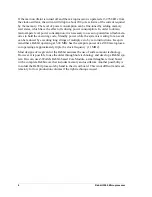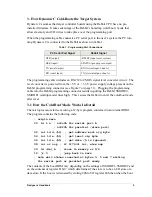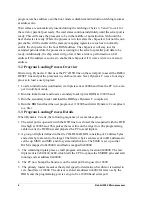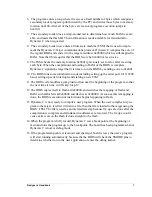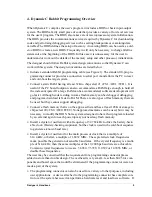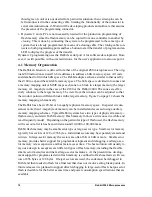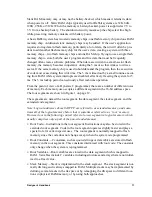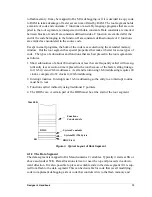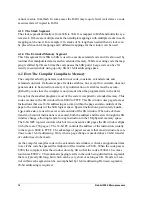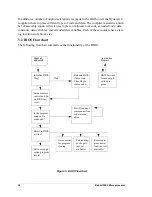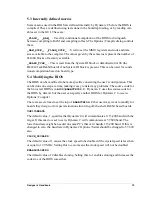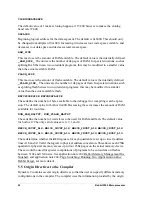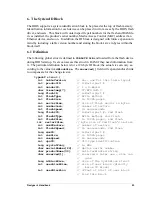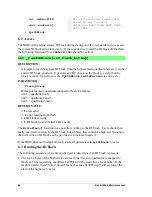
Designer’s
Handbook
7
6.
The program enters a loop where it receives a fixed number of bytes which comprise a
secondary
loader program (pilot.bin sent by the PC) and writes those bytes to memory
location
0x4100. After all of the bytes are received, program execution jumps to
0x4100.
7.
The secondary loader does a wrap-around test to determine how much RAM is avail-
able,
and reads the flash ID. This information is made available for transmittal to
Dynamic
C when requested.
8.
The secondary loader now enters a finite state machine (FSM) that is used to imple-
ment
the Dynamic C/Target communications protocol. Dynamic C compiles the core of
the
regular BIOS and sends it to the target at address 0x00000 which is still mapped to
RAM.
Note that this requires that the BIOS core be 0x4000 or less in size.
9. The
FSM checks the memory location 0x4001 (previously set to zero) after receiving
each
byte. When the compilation and loading to RAM of the BIOS is complete,
Dynamic
C signals the target that it is time to run the BIOS by sending a one to 0x4001.
10.
The BIOS runs some initialization code including setting up the serial port for 115200
baud,
setting up serial interrupts and starting a new FSM.
11.The
BIOS code modifies a jump instrucction near the beginning of the program so that
the
next time it runs, it will skip Step 12.
12.The
BIOS copies itself to flash at 0x80000, and switches the mapping of flash and
RAM
so that RAM is at 0x80000 and flash is at 0x00000. As soon as this remapping is
done,
the BIOSís execution of instructions begins happening in flash.
13.Dynamic
C is now ready to compile a user program. When the user compiles his pro-
gram
to the target, it is first written to a file, then the file is loaded to the target using the
BIOS’
FSM. The file is used as an intermediate step because fix-ups are done after the
compilation
is complete and all unknown addresses are resolved. The fix ups would
cause
extra wear on the flash if done straight to the flash.
14.When
the program is fully loaded, Dynamic C sets a breakpoint at the beginning of
main
and runs the program up to the breakpoint. The board has been programmed, and-
Dynamic
C is now is debug mode.
15.If
the programming cable is removed and the target board is reset, the user’s program
will
start running automatically because the the BIOS will check the SMODE pins to
determine
whether to run the user application or enter the debug kernel.
Содержание 2000
Страница 1: ...Rabbit 2000 Microprocessor Designers Handbook Revision C...
Страница 4: ...Rabbit 2000 Microprocessor...
Страница 6: ...2 Rabbit 2000 Microprocesssor...
Страница 12: ...8 Rabbit 2000 Microprocessor...
Страница 34: ...344 Dynamic C User s Manual...
Страница 36: ...34 Rabbit 2000 Microprocessor...
Страница 44: ...42 Rabbit 2000 Microprocessor...


